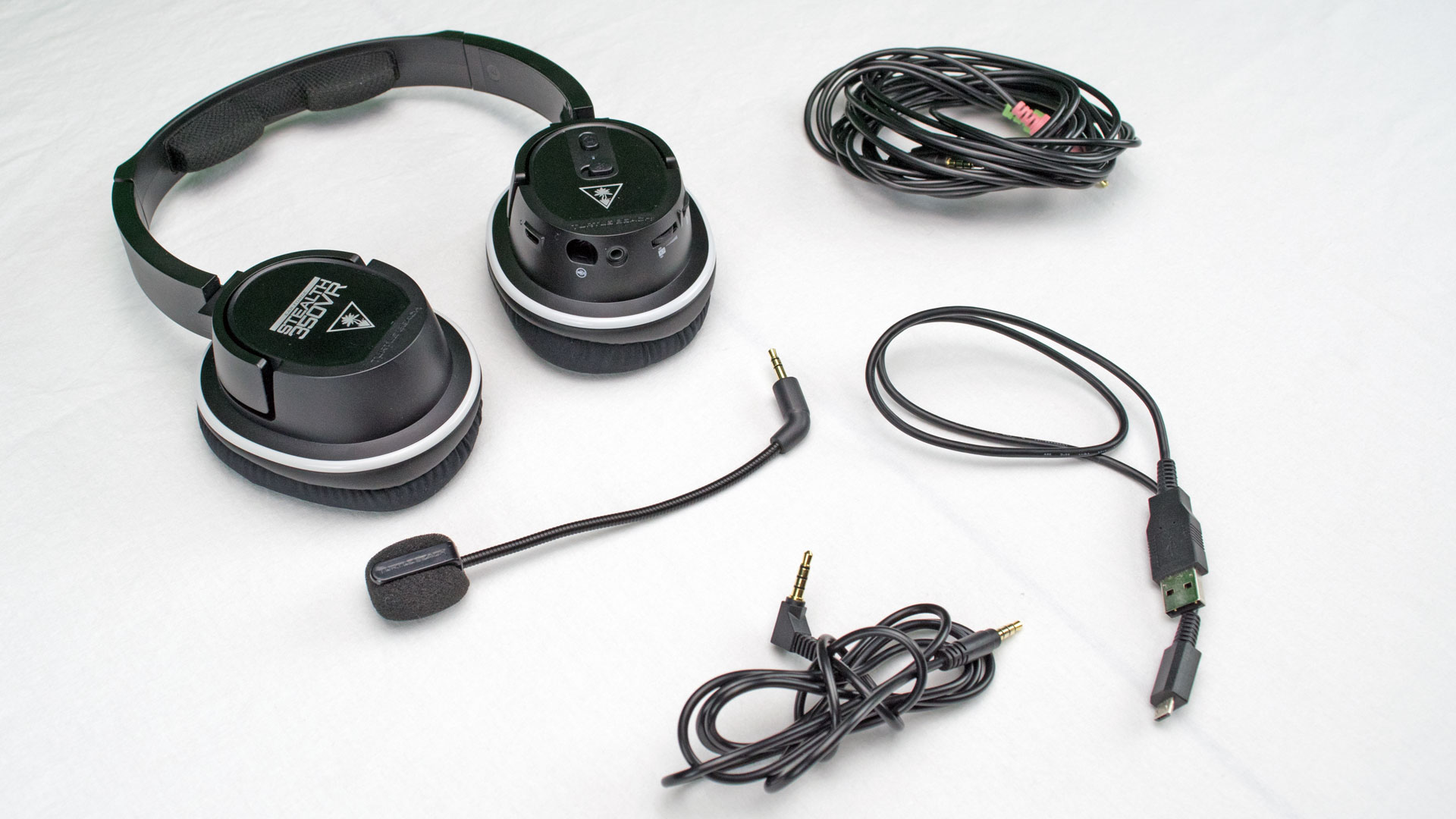The Turtle Beach Ear Force Stealth 350VR Headset: Designed For HMDs
Most headsets aren’t designed to share your cranium with another device, but the Turtle Beach Ear Force Stealth 350VR is. And it's designed for VR gaming.
It’s no secret that sound plays a major role in game immersion, and a good set of speakers or a quality headset can give you an advantage over other players, too. If you can hear them coming, but they can’t hear you, you’ll have a leg up on the competition. Even so, high quality audio in normal 2D gaming is more a luxury than a necessity.
In VR, though, audio quality can make or break the experience. Sound plays a major role in convincing your brain that a VR experience is real: If the sounds aren’t convincing, the visuals won't be enough to overcome the shortcoming, which means you won't be fully engaged by what's happening.
Experts working with VR agree that sound is half of the immersive experience, so when you’re shopping for a headset to go with your VR HMD, it's in your best interest to pick a good one. Of course, sound quality is of the utmost importance, but pairing a gaming headset with a VR HMD adds a new set of problems to worry about that go beyond the size and quality of the drivers.
Each VR HMD has a different strap system, and they often don’t work well with the shape and design of gaming headsets.
The HTC Vive’s side straps typically aren't a problem, but the top strap with all the data cables gets in the way of some headband designs.
On Sony’s PSVR, the headband is a rigid plastic device that your headset must fit both over and below. Some headsets aren’t wide enough to fit over the PSVR's headband, and larger over-the-ear headphones don’t fit under the band properly.
Get Tom's Hardware's best news and in-depth reviews, straight to your inbox.
Oculus provides an adequate set of speakers that come attached to the Rift, but some people prefer to use their headphones. Oculus provides a tool with the Rift to help you remove the pre-installed cans, but you’re on your own when it comes to finding a cord long enough to run back to the computer; Oculus doesn’t provide a pass-through audio jack option on the Rift.
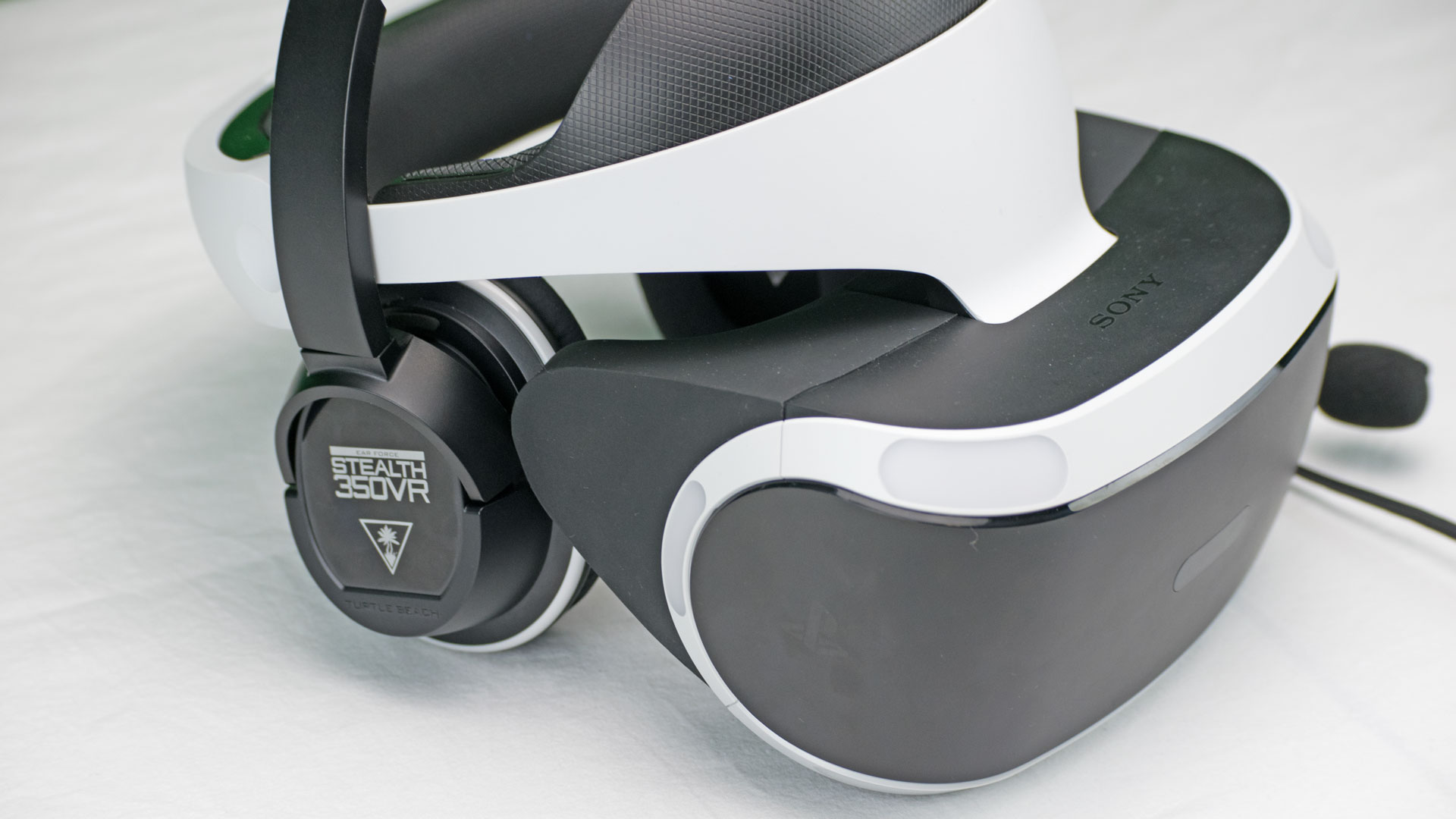

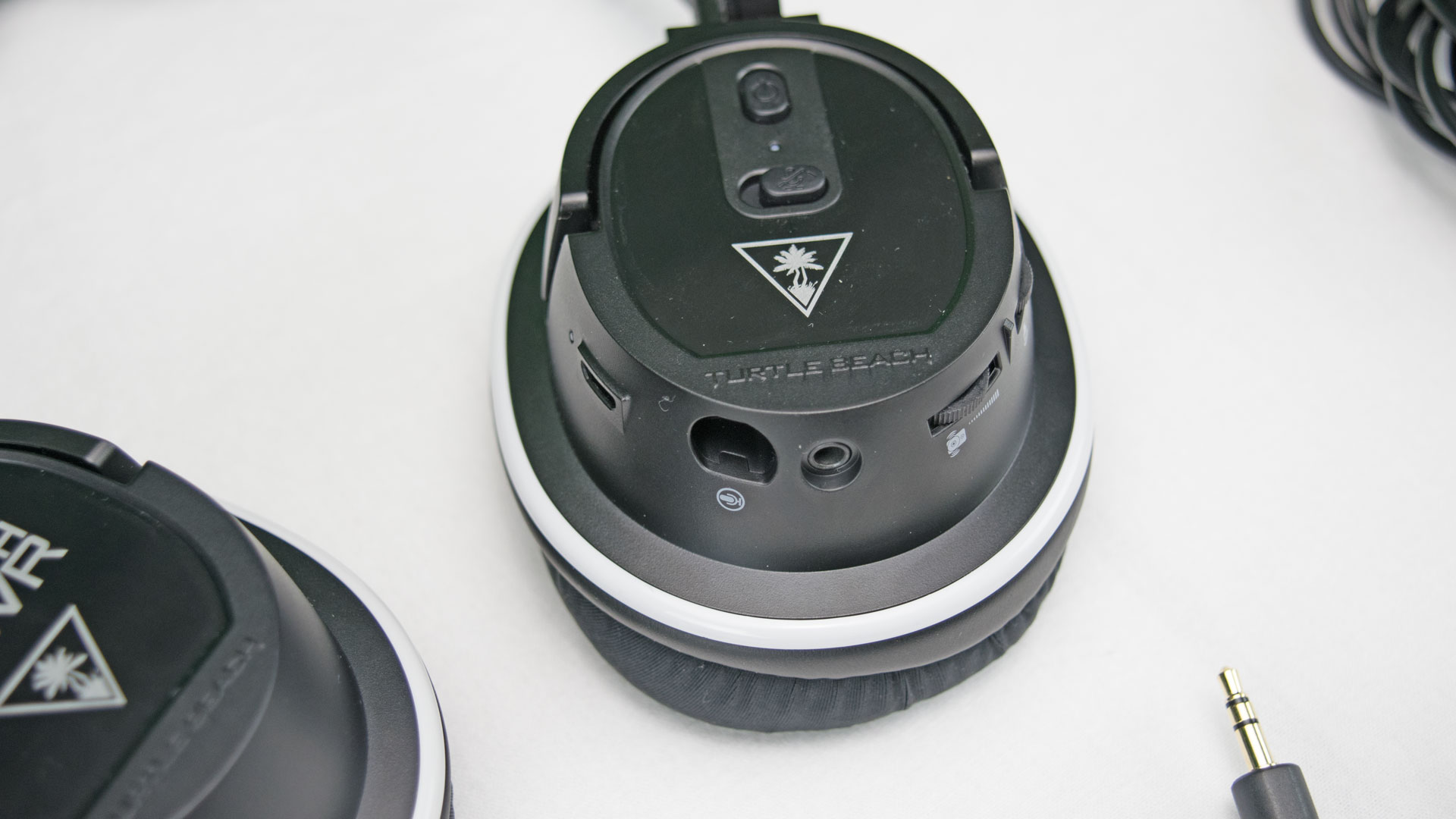


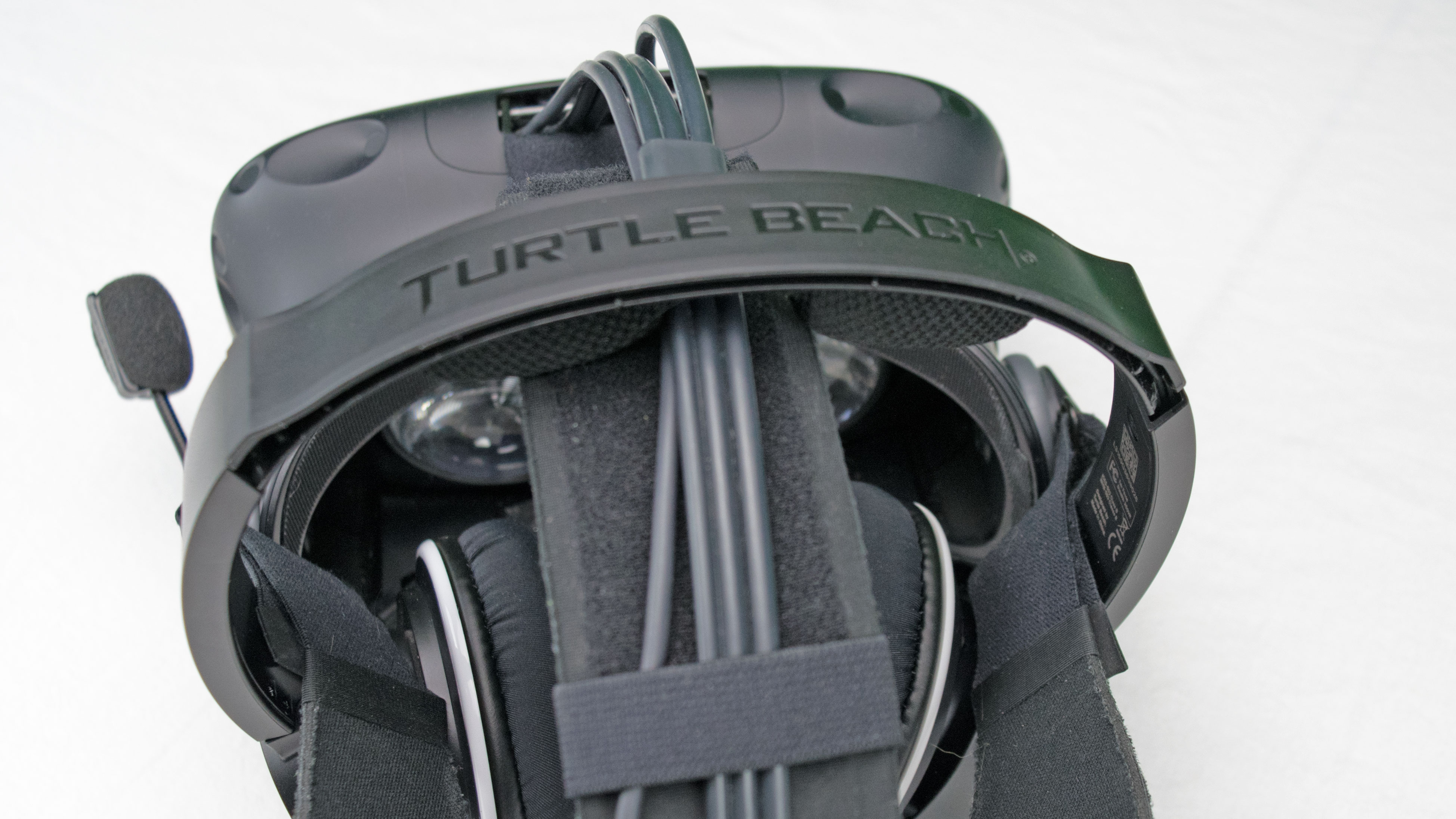

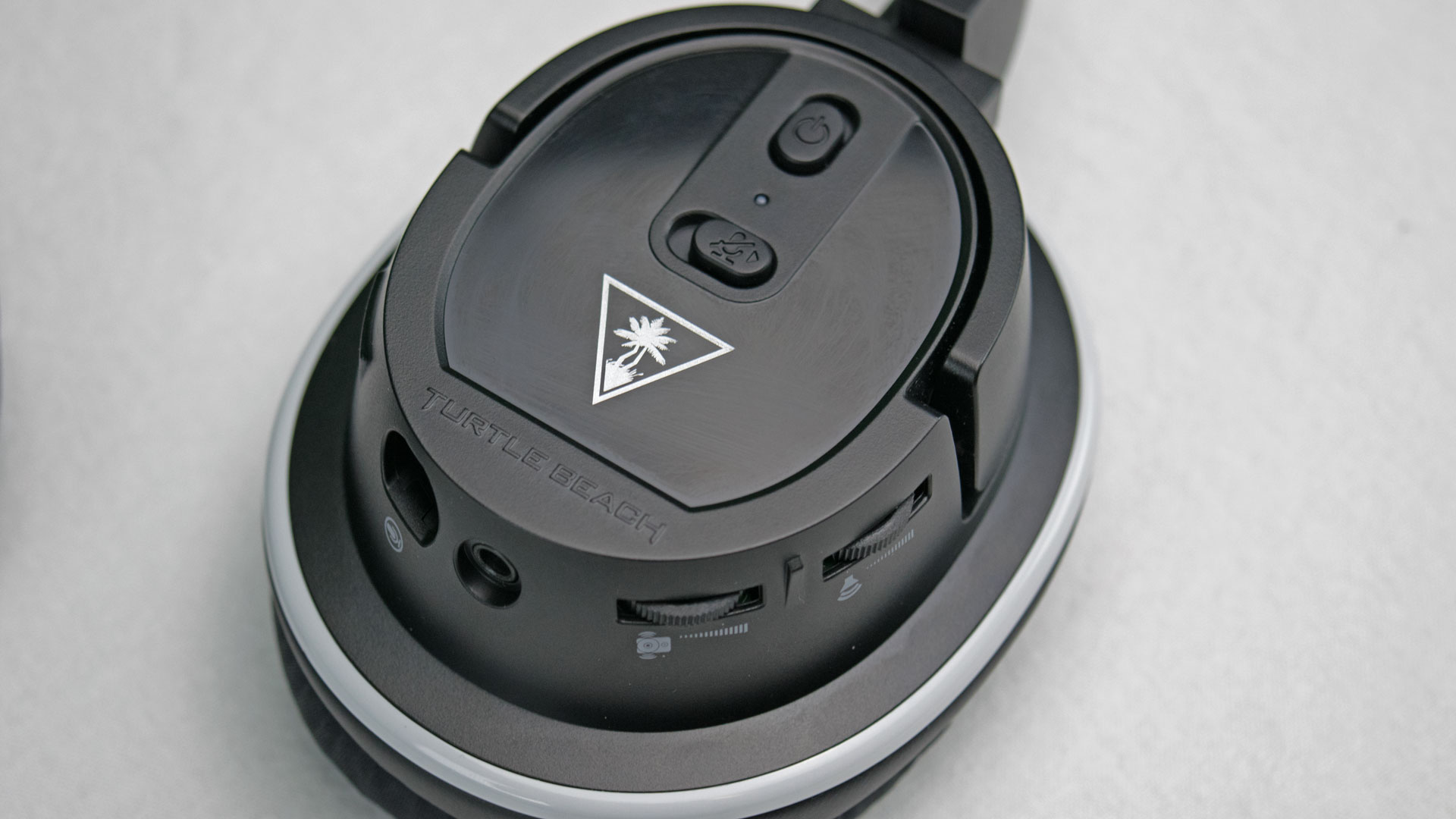
One Headset Fits All
Turtle Beach looked at the market and realized that many gaming headsets, including those in its own lineup, fall short of delivering a perfect VR experience because they weren’t designed to accommodate HMDs.
The company’s design team ensured that the Stealth 350VR headset would fit properly with all three major VR HMDs. The headset features a wide headband that fits over the PSVR’s headband and small ear cups that fit under it. It's also designed to accommodate the overhead cables from the Vive. The top padding features a cutout that leaves space for the data and video cables to pass through.
What Else Do You Get?
The Turtle Beach Ear Force Stealth 350VR gaming headset includes two 50mm Neodymium speakers that deliver rich highs and lows. The company installed a battery-powered amplifier inside the headset that offers enhanced 3D audio reproduction. The headset also features a dial that adjusts the variable bass boost for deeper lows.
The left earphone includes a power switch that turns on the amplifier (the headset doesn’t work at all without the amp), and there's a switch that toggles mic monitoring. You’ll also find adjustable volume and bass boost dials, a removable noise-cancelling microphone, and a micro-USB plug for charging. The audio cable also plugs into the bottom of the left earpiece.
The Ear Force Stealth 350VR includes two audio cable options. You can get a short stereo + microphone 3.5mm to 3.5mm cable that works with the PSVR, but If you want to use the headset on your computer with a Rift or Vive, you’ll want the 10-foot long 3.5mm to individual stereo and microphone 3.5mm jacks.
Build Quality & Design
Turtle Beach’s lineup of gaming headsets include some moderately expensive units that offer premium materials and sturdy designs. The Ear Force Stealth 350VR headset is neither expensive nor sturdy, but the headset is comfortable.
Turtle Beach made the headband out of molded plastic, but the design is thin, which makes it feel somewhat flimsy. The headband is large enough to reach over a VR HMD, but there’s so much flex in the headband that it feels like it may eventually become a weak point. The narrow headband limits the amount of padding that Turtle Beach could install. The notch for the overhead cables removes even more foam, so there isn’t much padding support on the top of your head.
The headphones on the Stealth 350VR headset are smaller than the average cans, but what they lack in size they make up for in comfort. Because of the compact headband and headphones, the Stealth 350VR is impressively light. And despite the lack of padding, the headset is surprisingly comfortable--largely due to the soft memory foam ear padding wrapped in soft microfiber fabric.
Practical Use
Turtle Beach designed the Stealth 350VR headset for the PSVR, HTC Vive, and Oculus Rift, so we tried it with all three.
The headset works great with the PSVR. The cable is a manageable length, and the audio quality is adequate. The headset also fits around the PSVR headband exactly as it should.
The Stealth 350VR doesn't fit as neatly with the Oculus Rift. The Rift’s built-in earphones are well suited for VR, and developers are encouraged to tune their experiences with those speakers in mind. The Stealth 350VR headset can deliver equal if not better immersive audio, but the extra hassle you must go through to use a separate headset doesn’t seem worth the effort. Because the Rift doesn’t have a pass-through audio jack, you have to run another long tether back to your computer. Turtle Beach includes a half dozen Velcro straps to help keep the headset and HMD cables together, but you lose the convenience of slipping on one device for gaming.
HTC’s Vive doesn’t offer an all in one solution, so you need to provide a pair of headphones either way. You can use the Stealth 350VR headset two ways with the Vive. HTC’s headset includes a pass-through audio jack, but that port only offers headphone pass-through, not a microphone port. To use the microphone from the Stealth 350VR headset, you must run the full-length cable back to your sound card, just like you do with the Rift configuration. Again, you’ll need the Velcro straps to secure the audio cable with the HMD tether.
The cabling issues are minor problems, and not unique to Turtle Beach’s solution. Unless you use a wireless headset for VR, you’ll run into cabling issues with any gaming headset.
The Stealth 350VR does introduce one unique, annoying problem: You don’t often run into a dead battery on a wired device, but we had that happen on more than one occasion so far with the Stealth 350VR. Turtle Beach claimed that the battery for the built-in amplifier lasts 30 hours, but the battery drains even when you're not using it; if you forget to turn the amp off when you put the headset down, that 30 hours will go by fast.
Good Value
The Turtle Beach Ear Force Stealth 350VR isn’t the most robust headset on the market, but it still offers tremendous value. It's actually less expensive than many of Turtle Beach’s products, which often cost hundreds of dollars. Turtle Beach is asking $79 for the Stealth 350VR, which we feel is a fair price for what the headset delivers.
You can spend significantly more for a headset that doesn’t include an amplifier or removable noise-canceling microphone. Further, if you’re buying a headset to use with your virtual reality hardware, you won’t find another headset on the market (yet) designed to physically accommodate the Rift, Vive, and PSVR HMDs.
Kevin Carbotte is a contributing writer for Tom's Hardware who primarily covers VR and AR hardware. He has been writing for us for more than four years.
-
lahma The 3.5mm jack on the Vive has a 4 pole connector and does indeed pass through the microphone connection. I know because I have a Vive and use it daily with my Bose QC35's with an add-on boom microphone. Just as its audio output is labeled, "Speakers - USB Audio Device", its microphone is labeled, "Microphone - USB Audio Device" in Windows' Sound Panel. You definitely do not need to use a 10ft cable to connect your microphone back to your PC.Reply -
kcarbotte Reply18824154 said:The 3.5mm jack on the Vive has a 4 pole connector and does indeed pass through the microphone connection. I know because I have a Vive and use it daily with my Bose QC35's with an add-on boom microphone. Just as its audio output is labeled, "Speakers - USB Audio Device", its microphone is labeled, "Microphone - USB Audio Device" in Windows' Sound Panel. You definitely do not need to use a 10ft cable to connect your microphone back to your PC.
I will have to test this.
I was following the instructions that Turtle Beach provided.
-
Jeff Fx If you want immersion, in-ear headphones that block outside sound are the best solution. Headphones like this are good if you don't want full immersion.Reply -
kcarbotte Reply18824361 said:If you want immersion, in-ear headphones that block outside sound are the best solution. Headphones like this are good if you don't want full immersion.
Not everyone can wear in-ear headphones.
I can't find a pair or in-ear headphones that don't A) fall out all the time, or B) hurt my ears/ ear drums.
In-ear headphones are also not an option for sharing your VR setup with others. -
WFang Reply18824361 said:If you want immersion, in-ear headphones that block outside sound are the best solution. Headphones like this are good if you don't want full immersion.
On the contrary, for good immersion on the soundstage, you should go for open can designs, such as the Grado Labs Prestige series. The open can design allows for much wider sound-stage and better positioning queues. . . or so the internet tells me. Personally I love the SR80's because of the sound-quality to price ratio.
